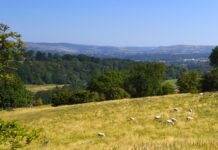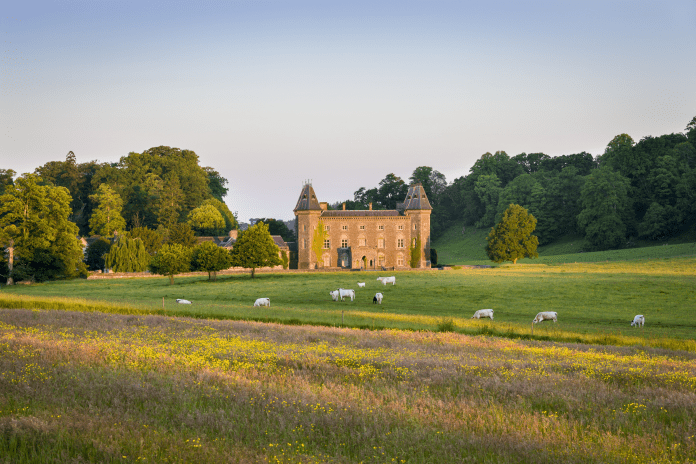National Trust conservation efforts help Welsh meadows start to thrive on their own
- 40 acres of new meadow introduced
- First sighting of rare long-horned bees on Gower
- Grass Vetchling discovered in the Vile for the first time
- 50% more yellow rattle and eyebright grass at Chirk
- Wildflowers not seen since WWII spotted
Ahead of National Meadows Day (July 6th), National Trust Wales is celebrating major achievements in the conservation of the 582.2 acres of meadows under its care.
With 40% of Britain’s meadows in Wales, it is a rich and iconic part of the country’s landscape and history. Since 1930, 97% of Wales’ wildflower meadows were lost due to heavy fertilization and early hay crops. This loss of habitat resulted in a dramatic decline in pollenating species – 63% of butterflies were lost in Wales.
But ambitious plans from Wales’ largest farmland owner, the National Trust Wales, are starting to help reverse this. In the last year alone, meadow conservation by the charity has created 40 acres of new meadow across Wales. With this has come a reintroduction of rare wildlife and plant species.
Repairing the intensively farmed fields has included scarifying the earth back to bare soil to allow it to rejuvenate, reseeding wildflowers to bring back forgotten species and planting new hedgerows which manage the climate by reducing wind and increasing humidity to help pollinators.
The dedication of staff and volunteers at properties and outdoor sites is paying off with regular surveillance showing signs that the meadows are starting to regenerate themselves.
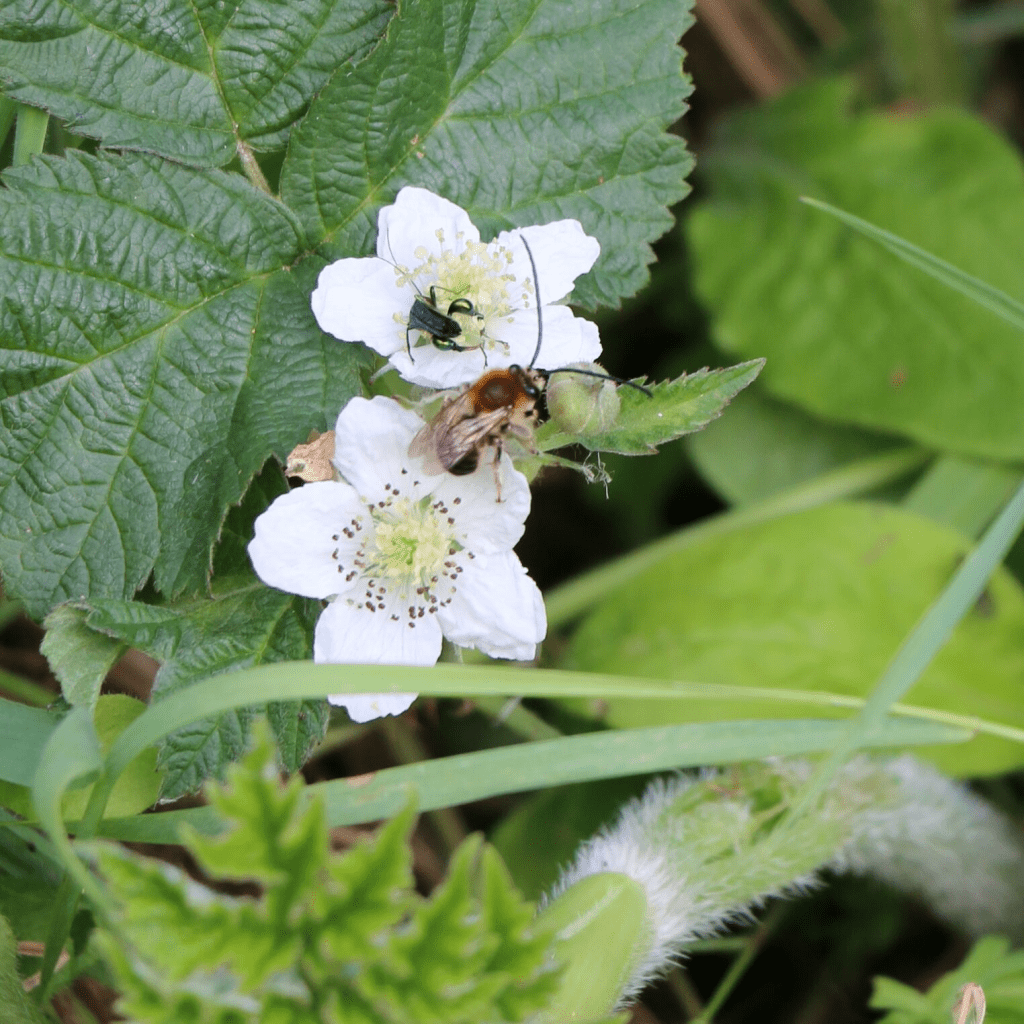
Five new hay meadows have been created on the Vile, causing a bumper show of oxide daisies in the past two weeks. Volunteers have also recorded sightings of a long-horned bee, dark green fritillary butterflies and buff tailed bumblebees, which love wildflowers and haven’t been seen on Gower in many years.
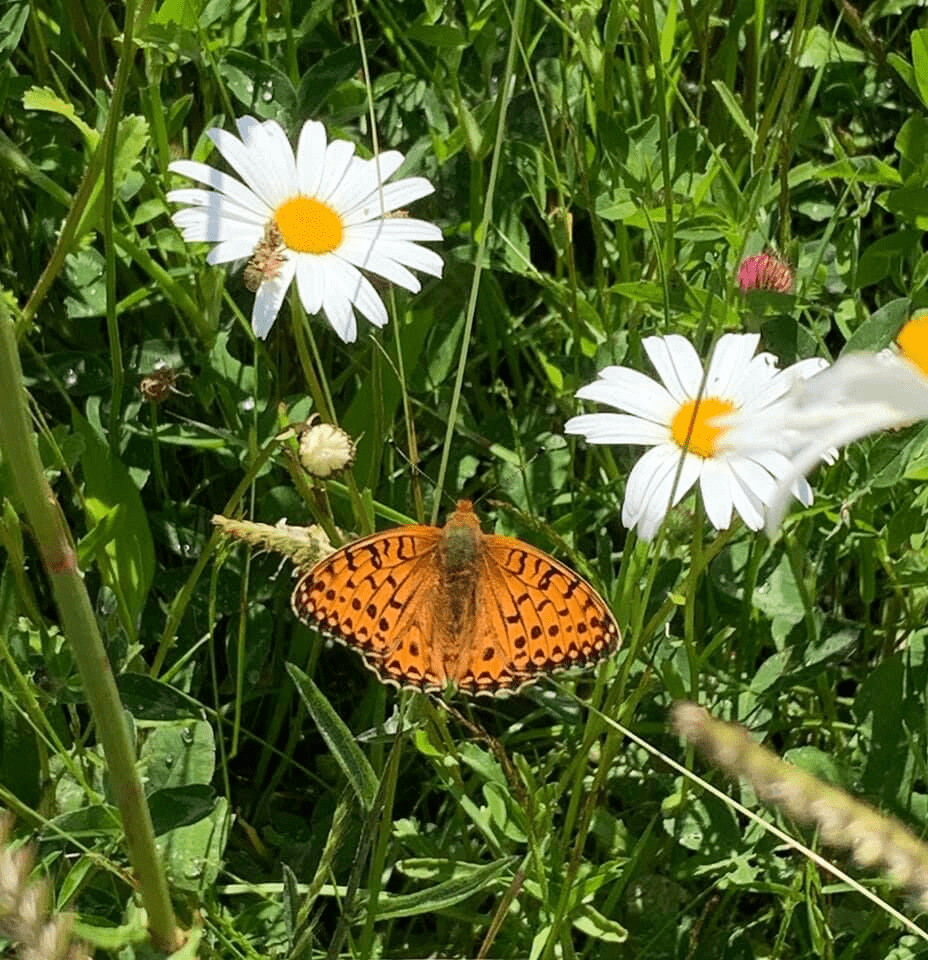
Alan Kearsley-Evans, Coast and Countryside Manager for Gower and Ceredigion, said: “Since we started the project to redevelop the meadow land on the Vile in 2017, we’ve seen a great diversity in flowering plants. Last year it was the sunflowers, right now the fields look snow capped with the volume of oxide daisies. It’s a delight to see the meadows mature each year.
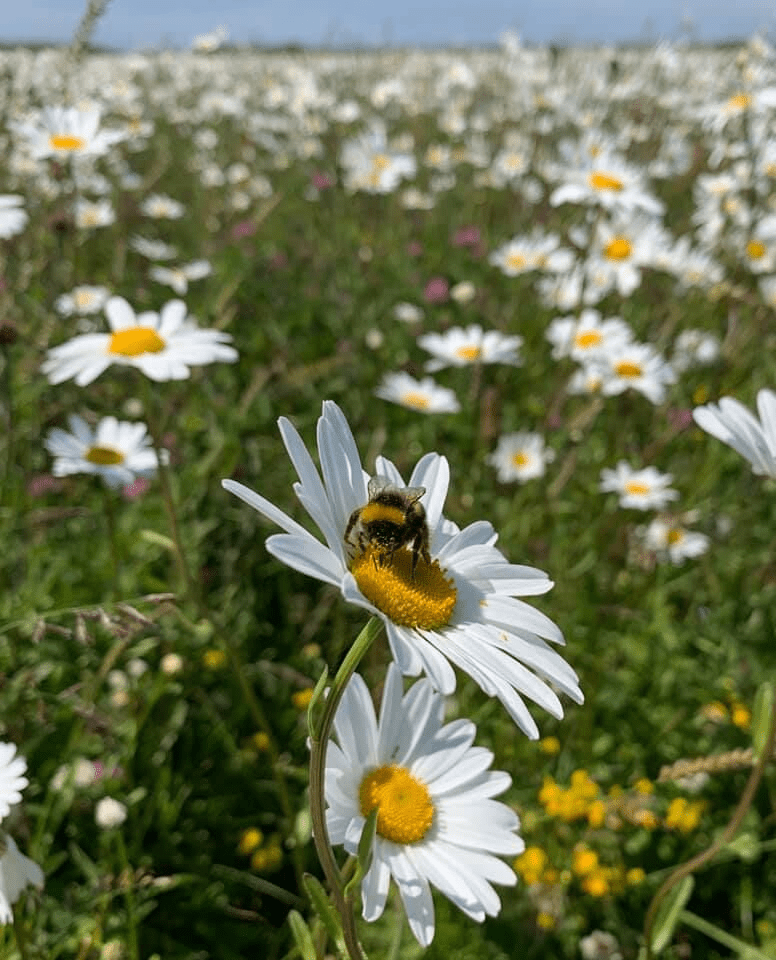
“The return of wildlife which hasn’t been seen on Gower for many years is an assuring sign that the methods we are using are working. But it’s not just us, the meadows themselves are doing much of the work too. The tall grass and wildflowers are welcoming to pollinators, spreading seeds naturally.”
Elsewhere in the Trust, pollinators are thriving at Colby Woodland Garden which has recently achieved Bee Friendly status by the Welsh Government. Work across the garden and wider estate has included the restoration of nearly five hectares of wildflower meadows and creation of wildflower strips to deliver for nature and protect pollinating insects.
In North Pembrokeshire, the team care for 263 acres of existing meadows, with plans to create and restore a further 670 acres in the future. Survey work in 2018/19 highlighted that the landscape is already showing its appreciation, with plants like yellow, rattle, devil’s bit scabious and southern marsh orchid thriving across the fields.
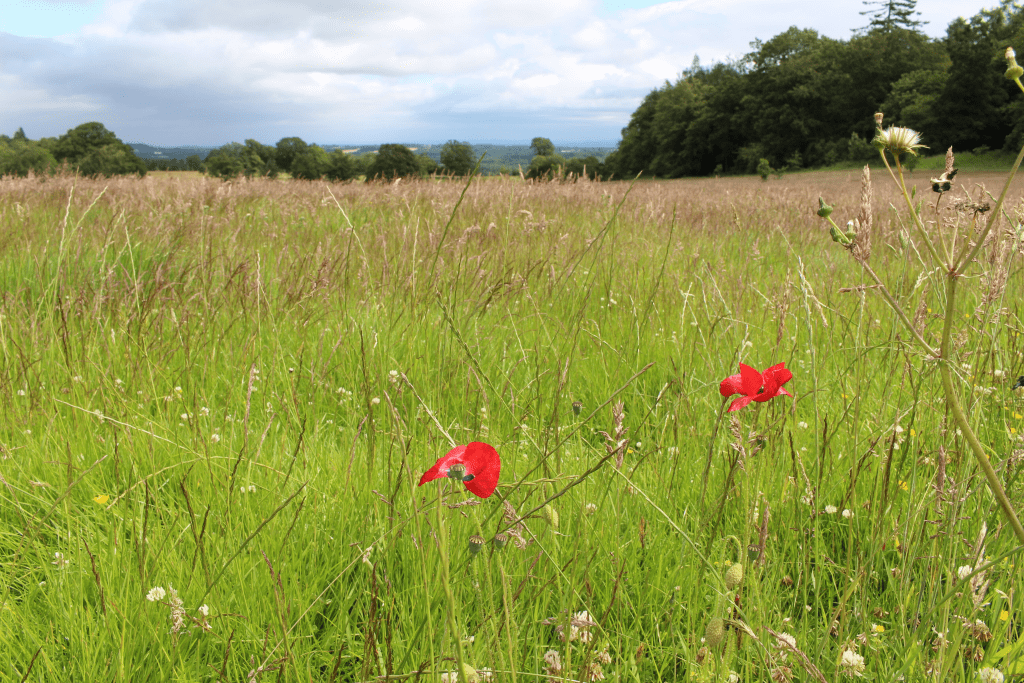
Six hectares of herb rich meadows have been reestablish in front of Chirk Castle. Developed using green hay from nearby established meadows within the National Trust, since planting last year, there has been a 50% increase in yellow rattle and eyebright grass, needed for meadows to self-weed.
The near threatened species of Green-winged Orchids, reminiscent of old meadows and post-war farming methods are blossoming once again at Bodnant Garden.
The conservation of its meadows is ongoing and regular surveying is taking place to monitor progress. On Meadows’ Day, Dinefwr, which has close to 105 acres of meadows, will host its first ever 24-hour Bioblitz, for visitors to help chart their meadows and count the wildlife and plant life that has flourished in the last year.
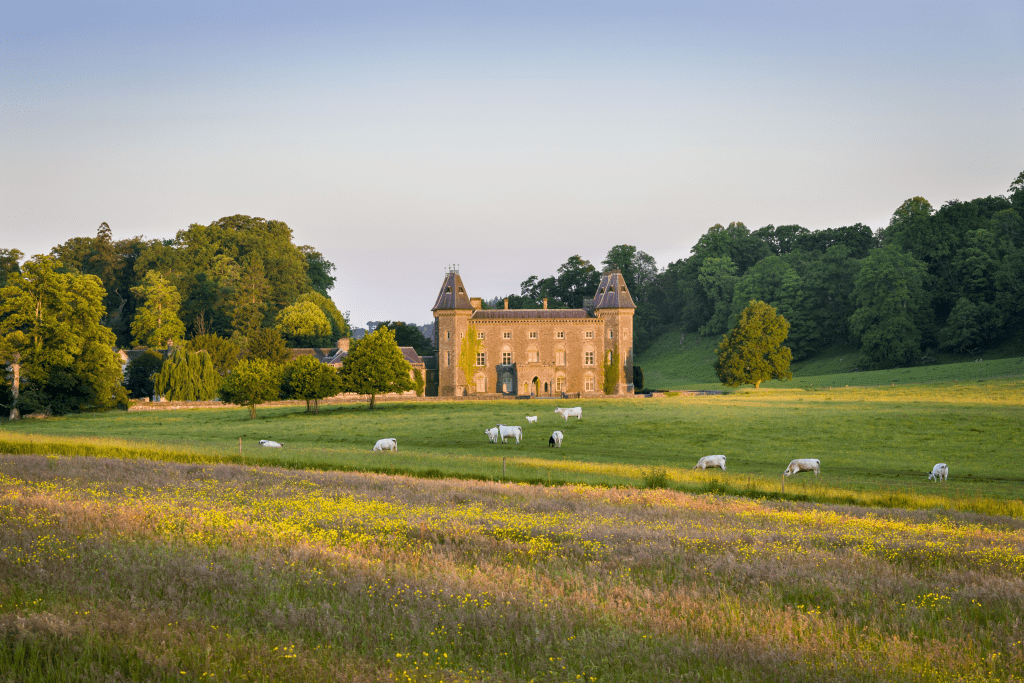
National Trust Wales currently cares for 582.2 acres of meadows. As part of its commitment to Wales’ meadows, it has also invested in new initiatives to work closer with tenant farmers, providing them with tools and resources to help them lead them way in nature friendly farming, allowing wildlife to thrive.
Lauri MacLean, Wildlife Advisor for National Trust in Wales, said: “As well as the ecological benefits for plant life, insects and animals, there are many benefits for farmers too.
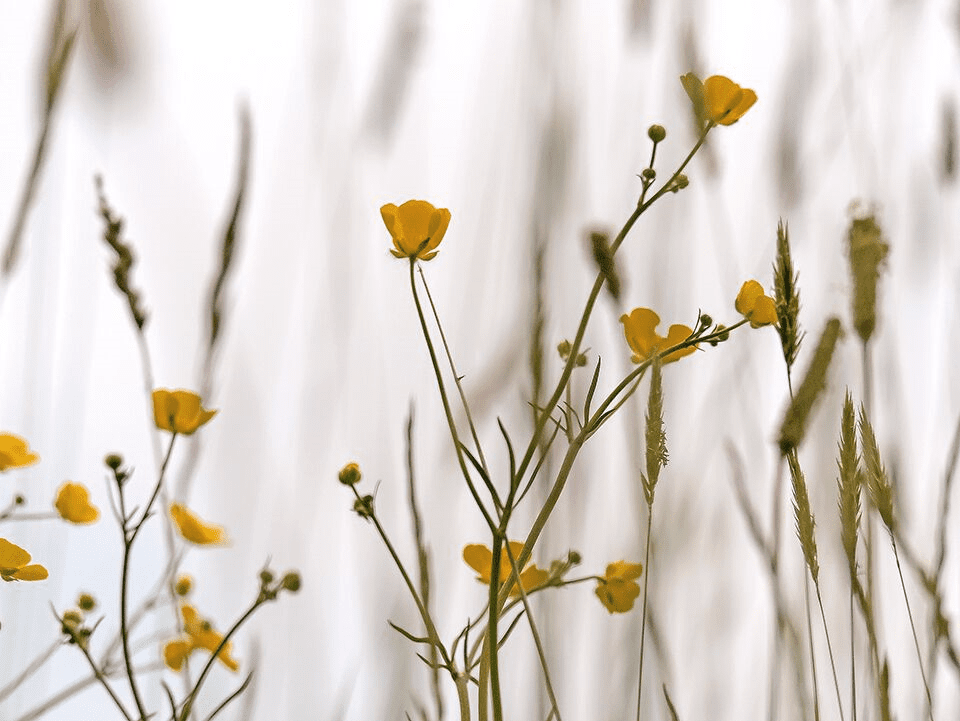
“Allowing hay crops to grow wild for longer before cutting means they acquire more minerals and fibre. The pollination of the crop also allows for a more ‘diverse diet’ for live-stock grazing on the land.”
This National Meadows’ Day, Saturday 6th July, there will be family friendly events at National Trust’s special places all across Wales for visitors to learn more about meadows and how to protect them for future generations. To find an event near you visit: http://bit.ly/NTMeadowevents
Help keep news FREE for our readers
Supporting your local community newspaper/online news outlet is crucial now more than ever. If you believe in independent journalism, then consider making a valuable contribution by making a one-time or monthly donation. We operate in rural areas where providing unbiased news can be challenging. Read More About Supporting The West Wales Chronicle








